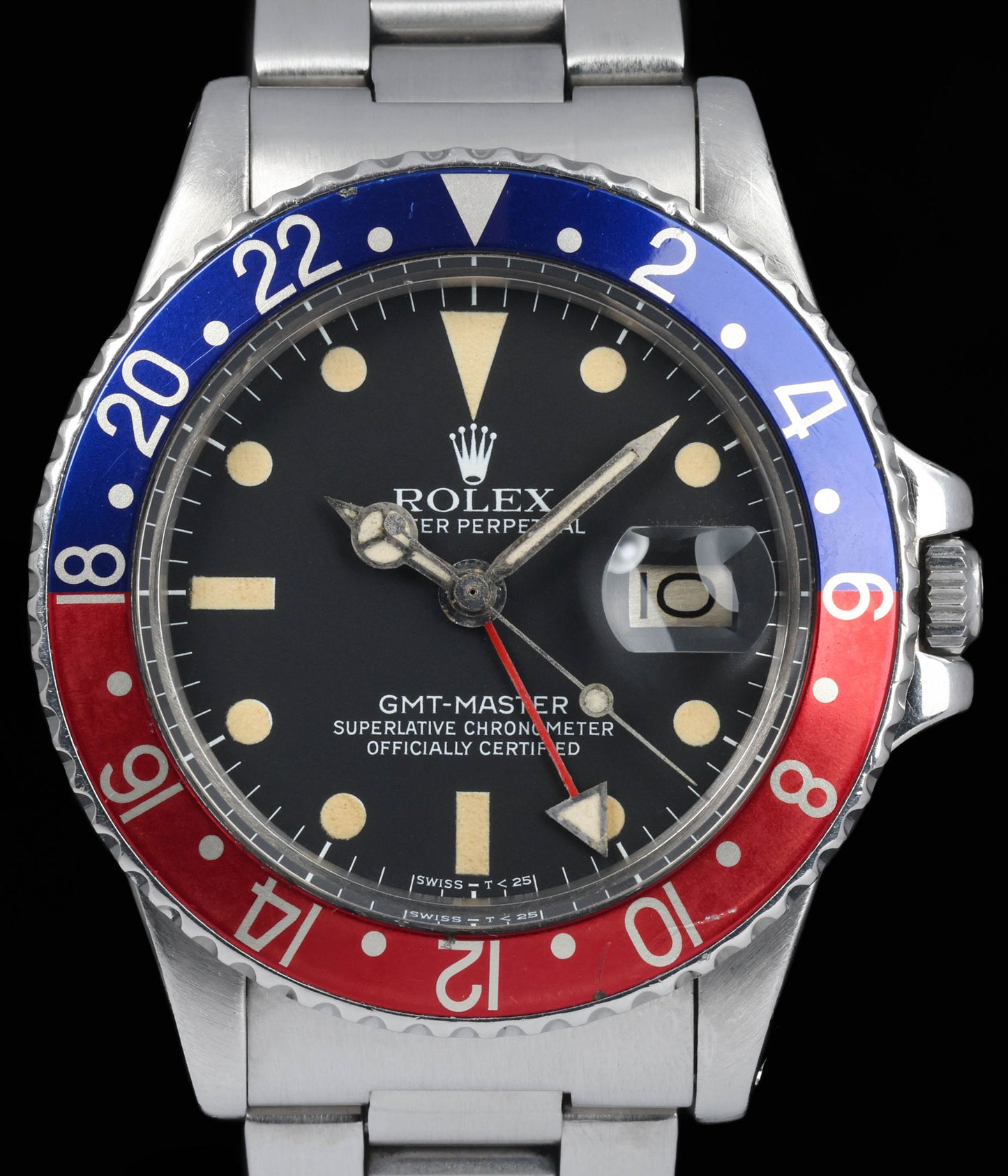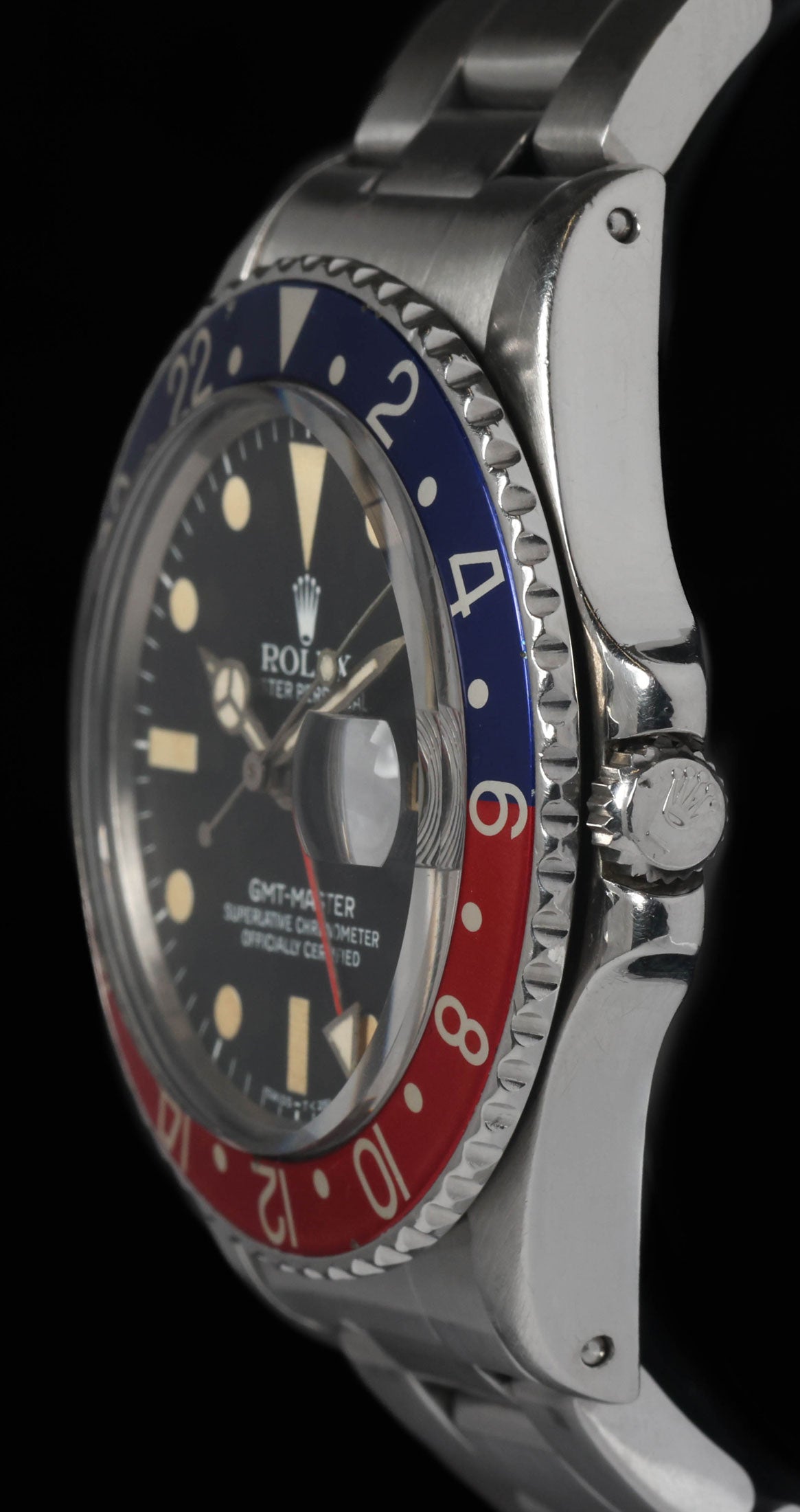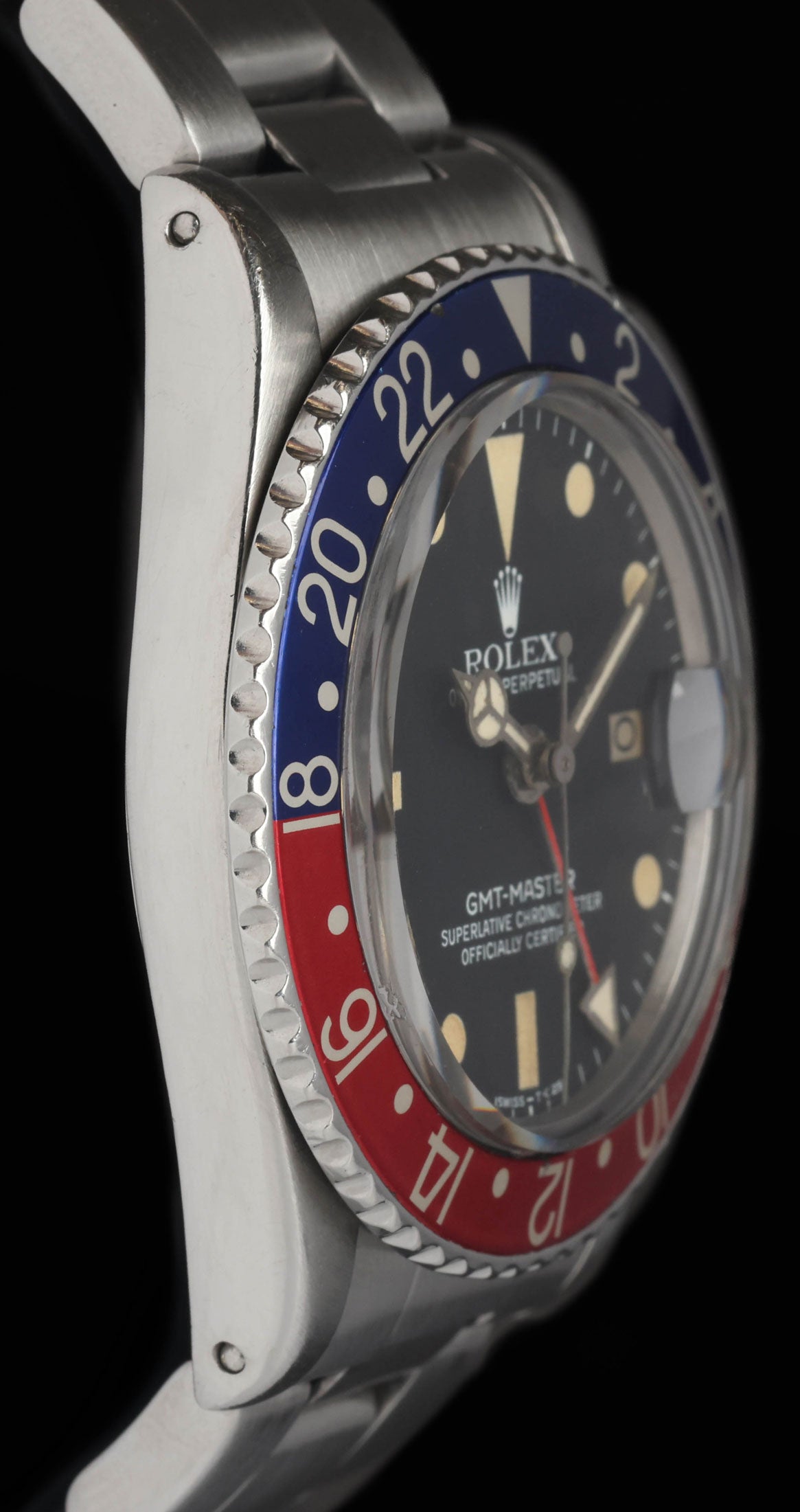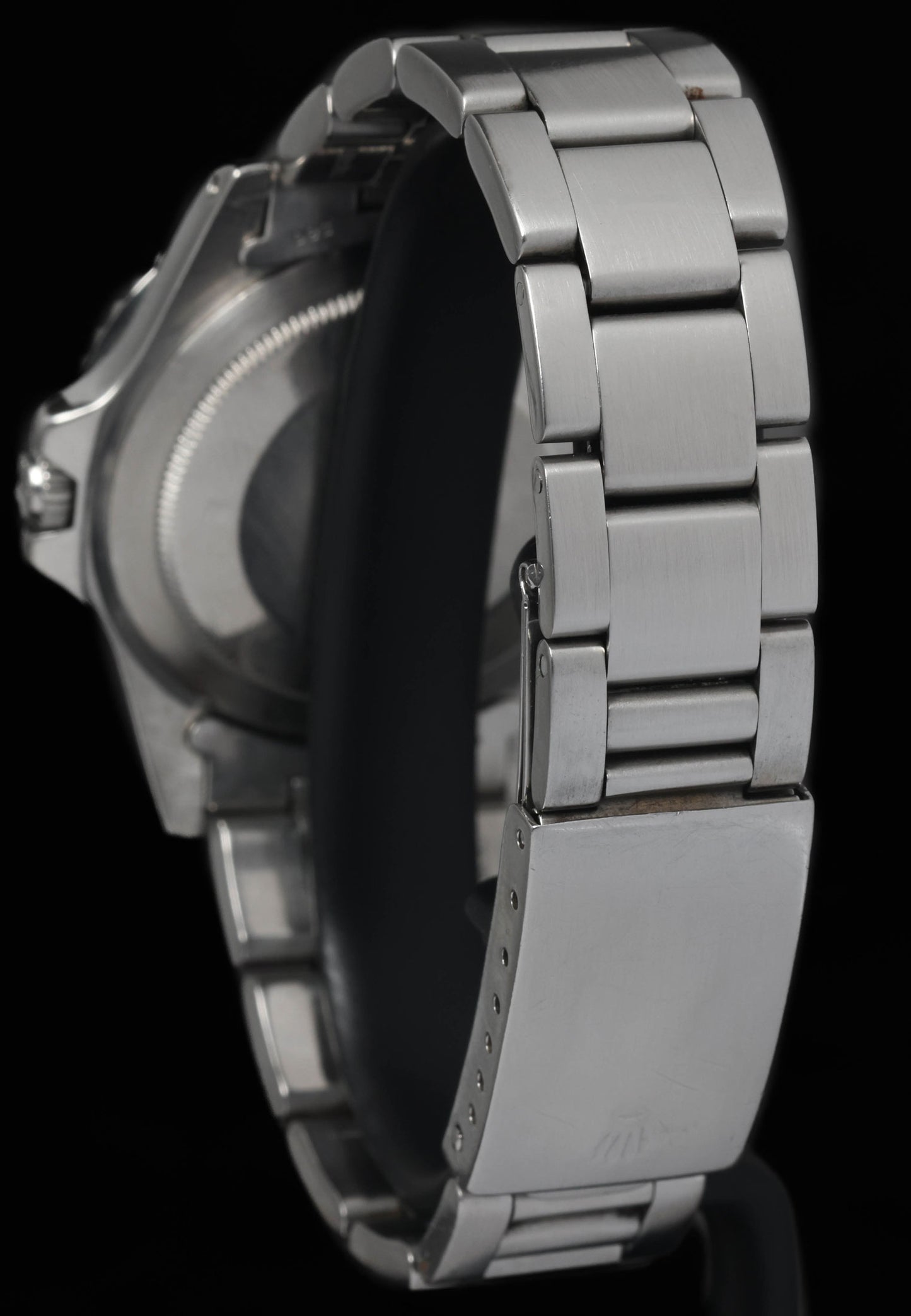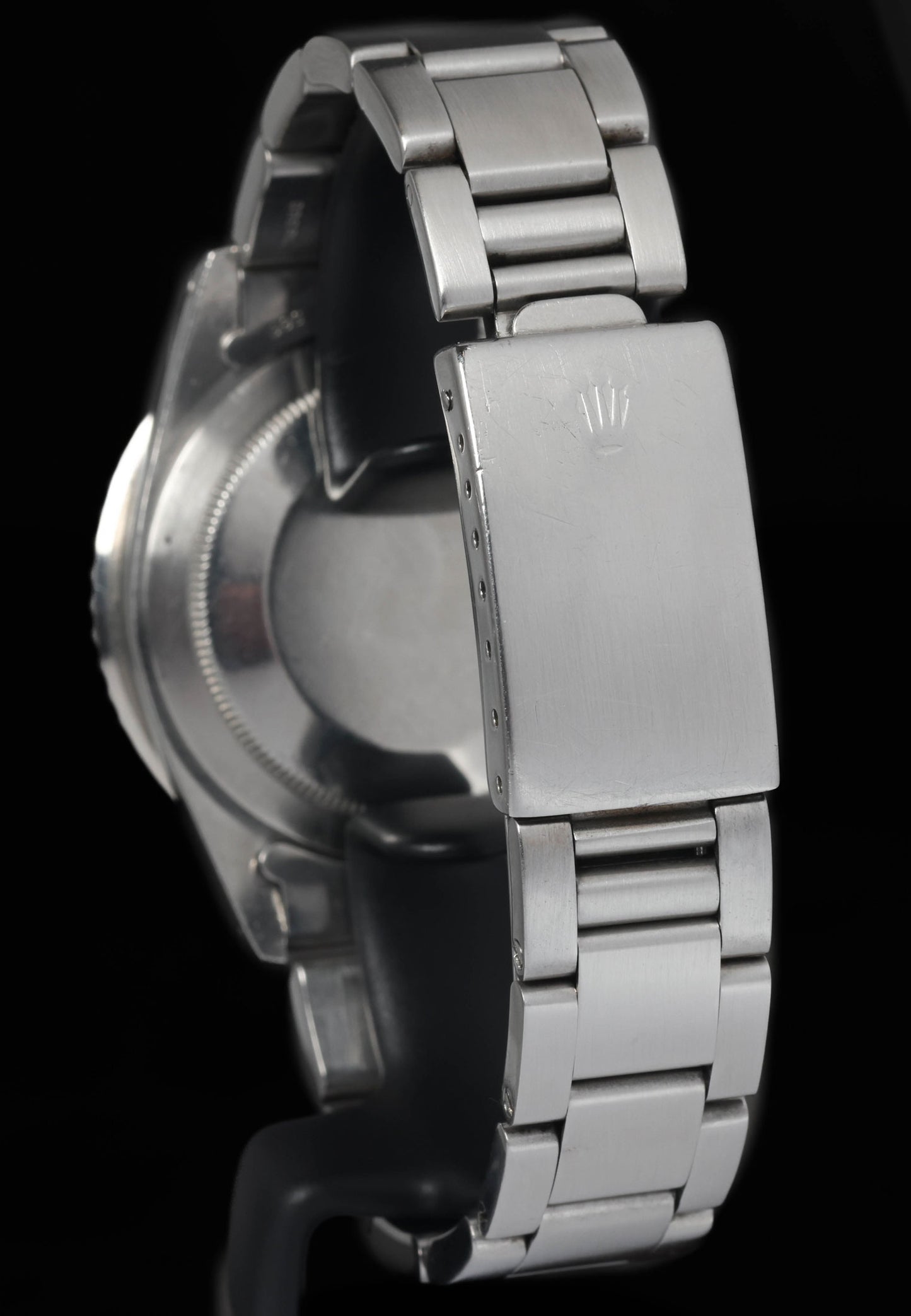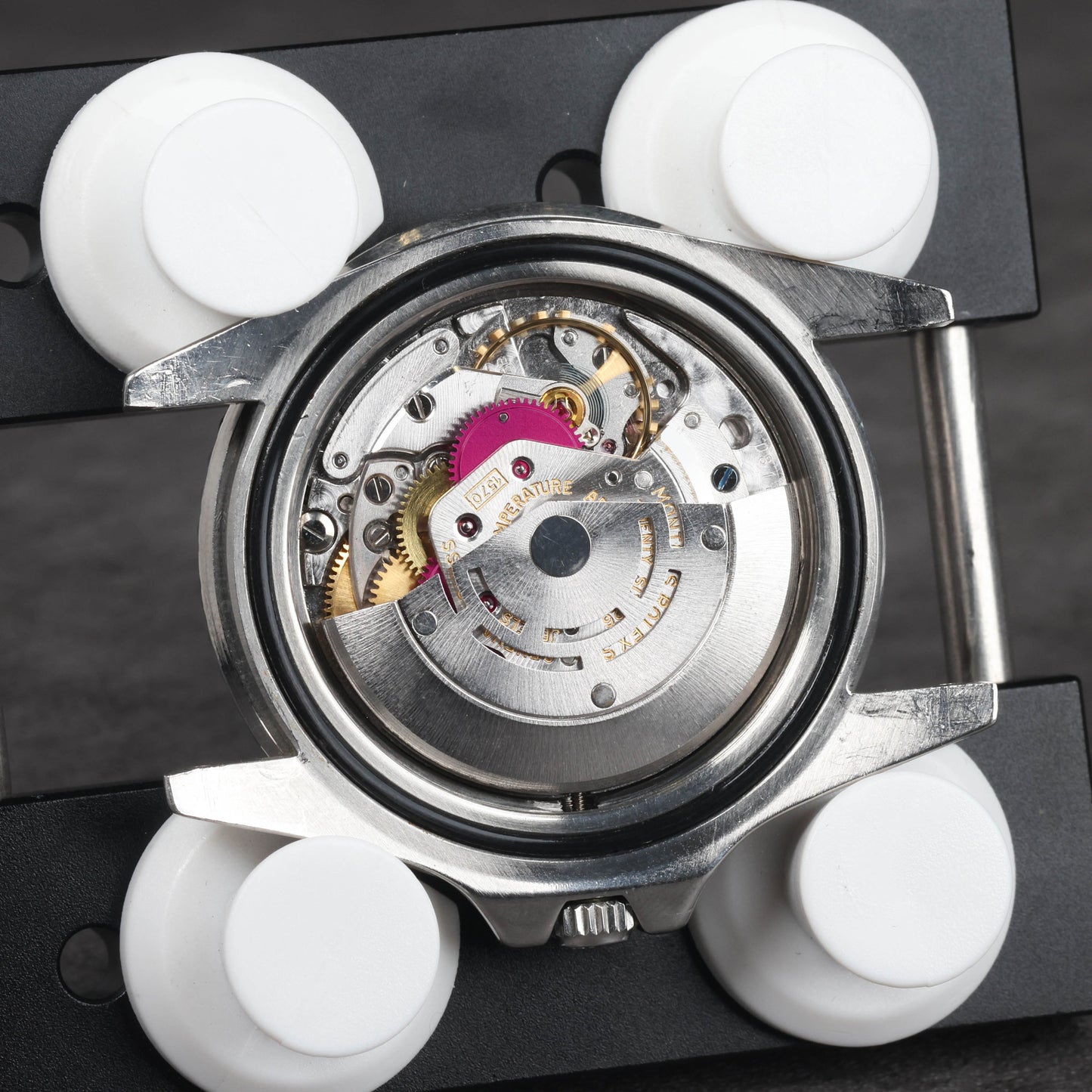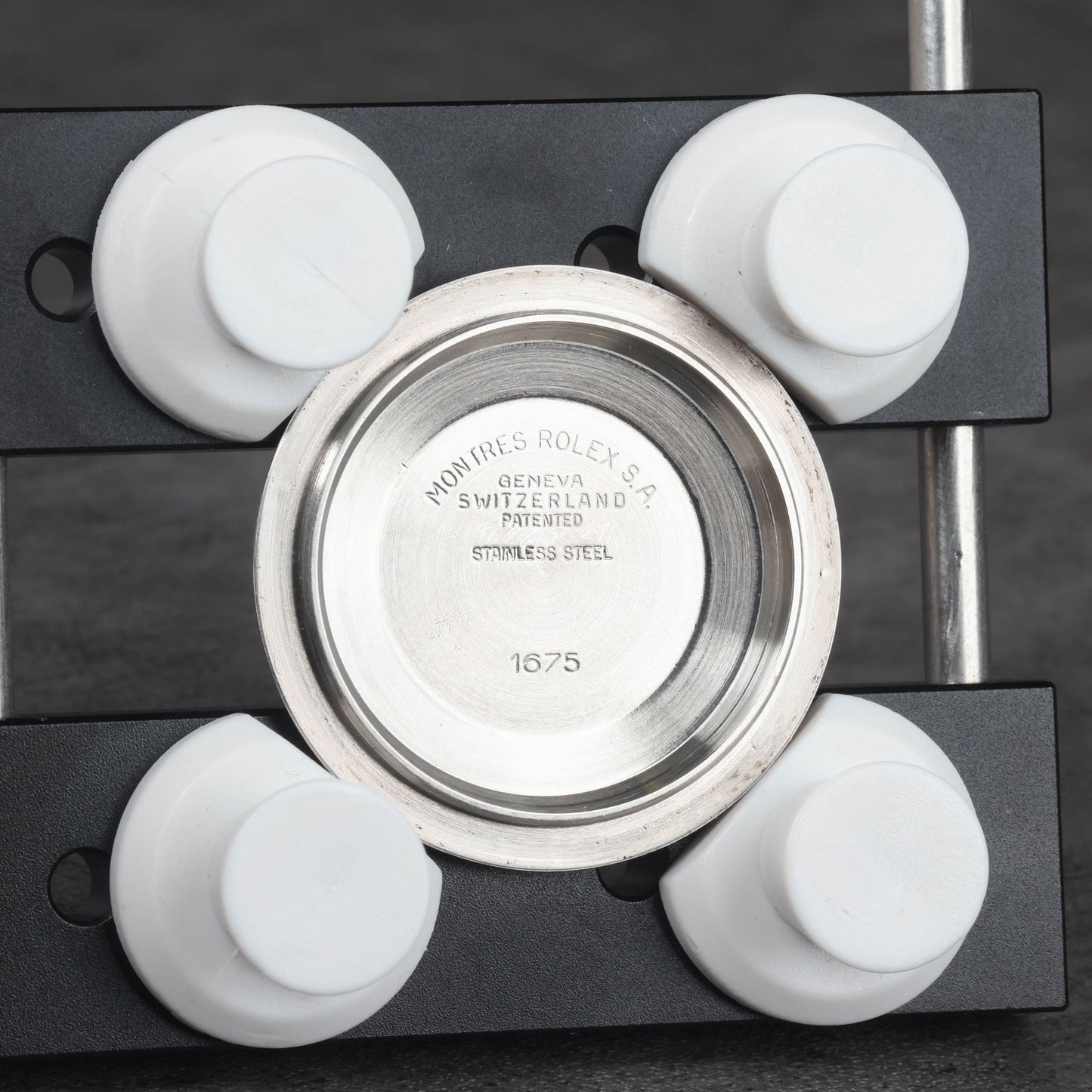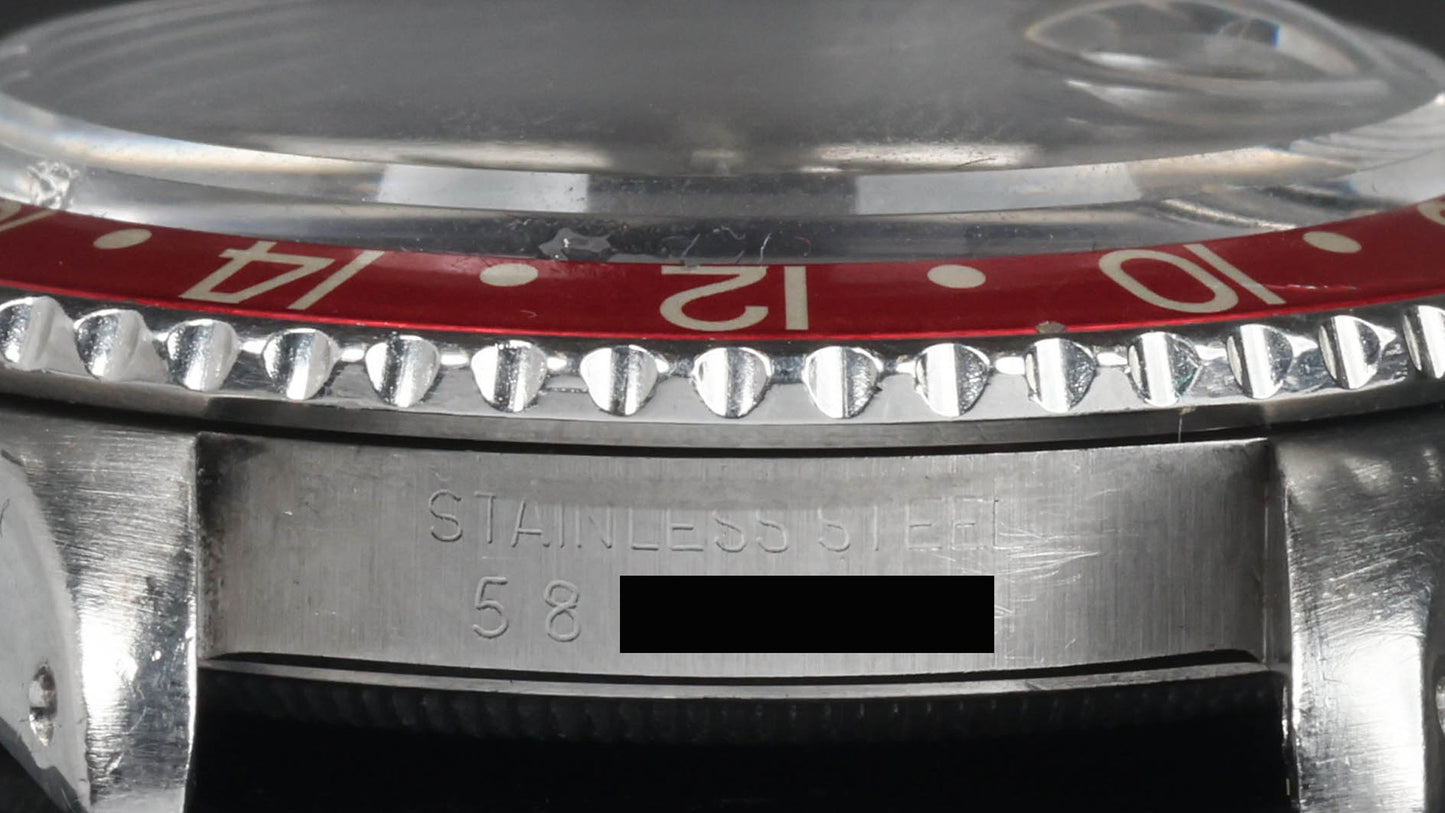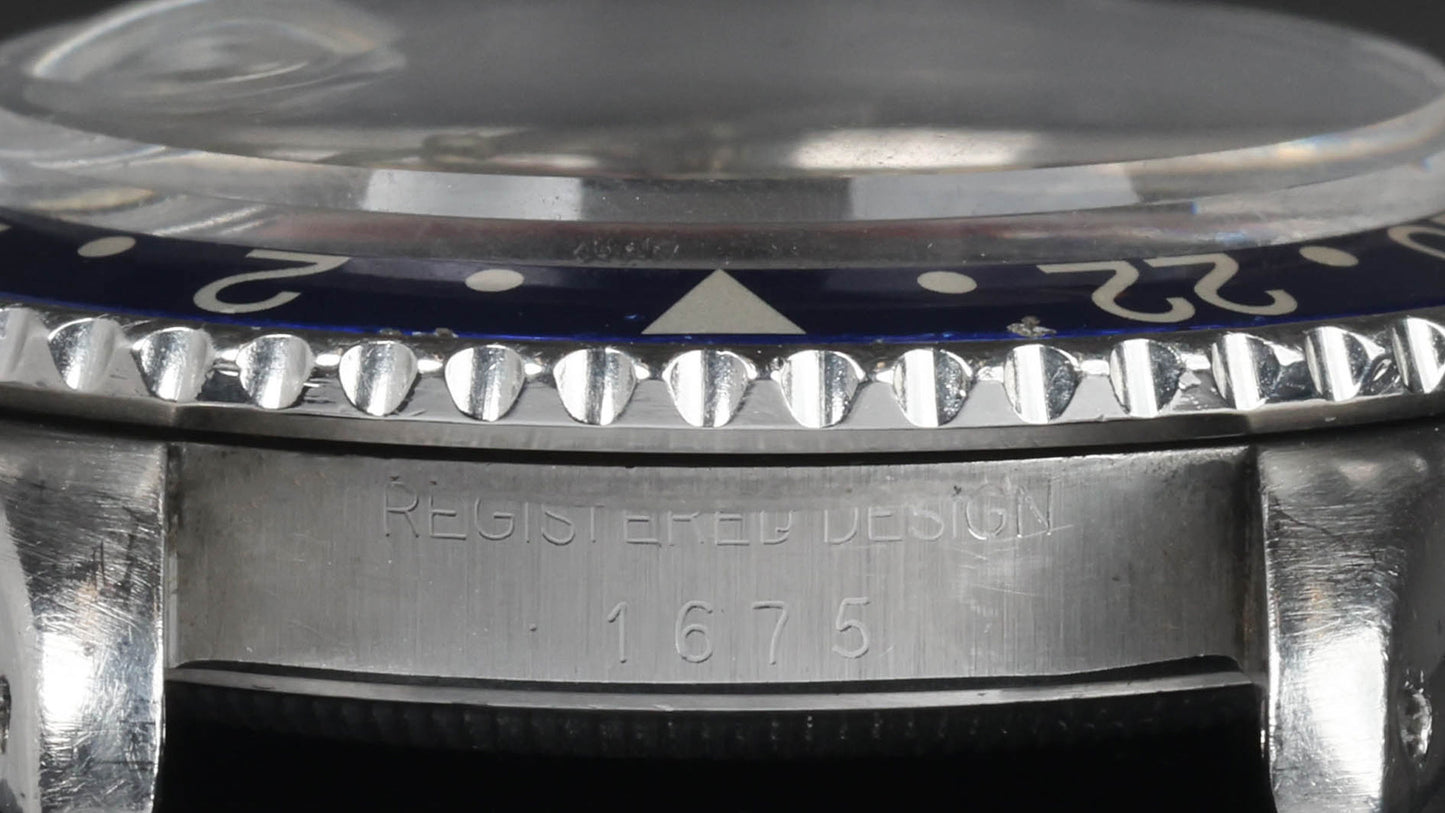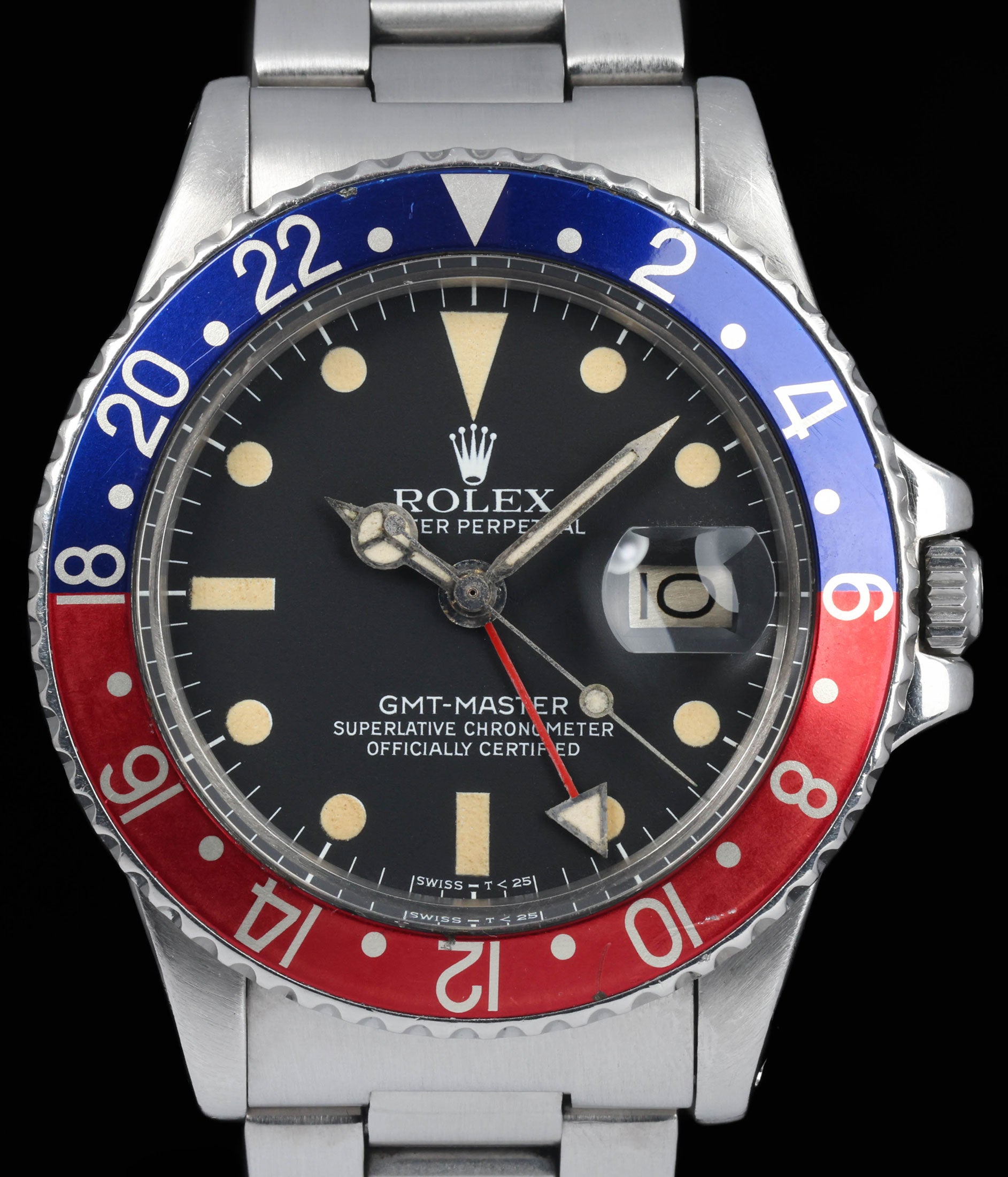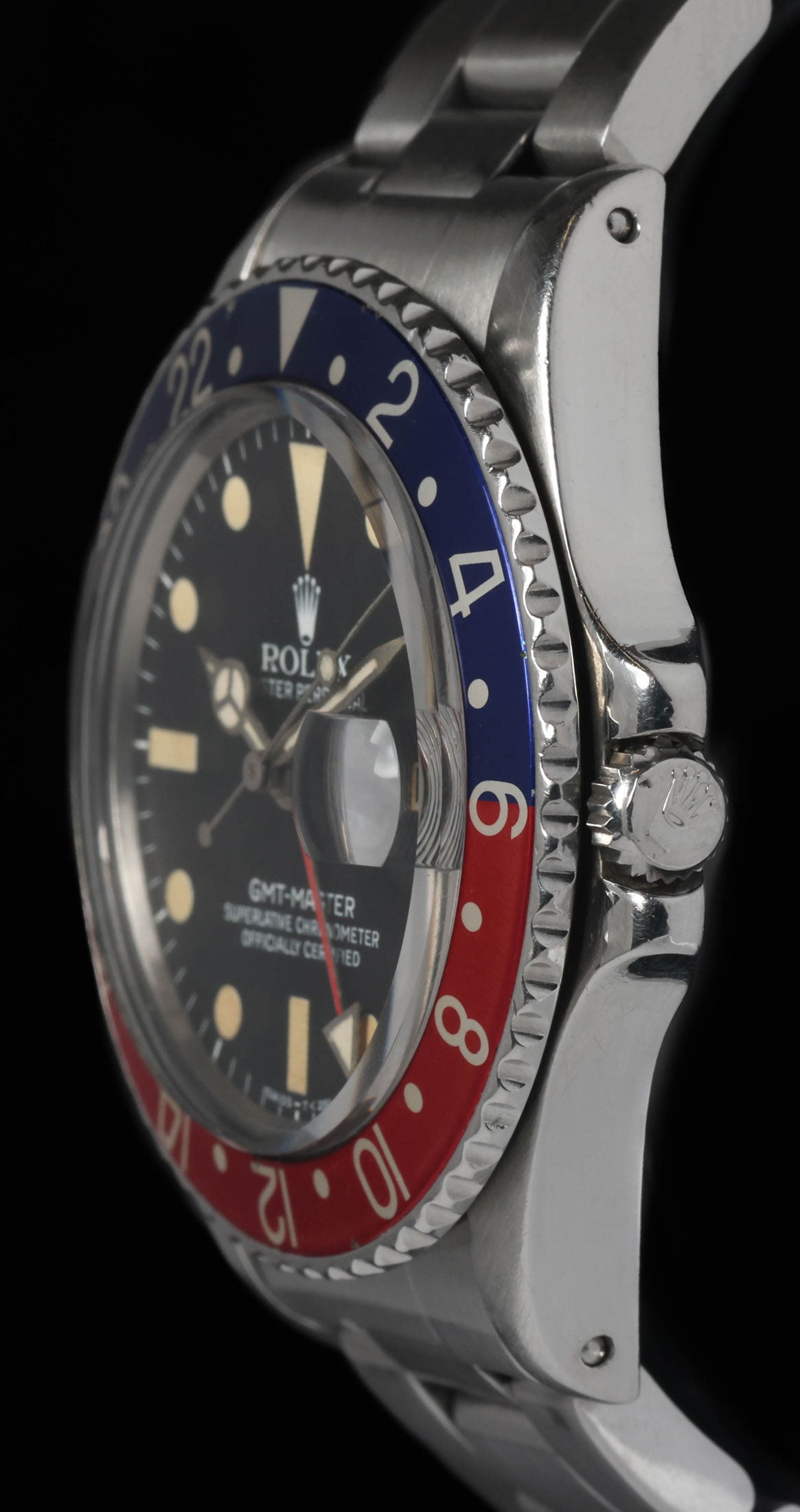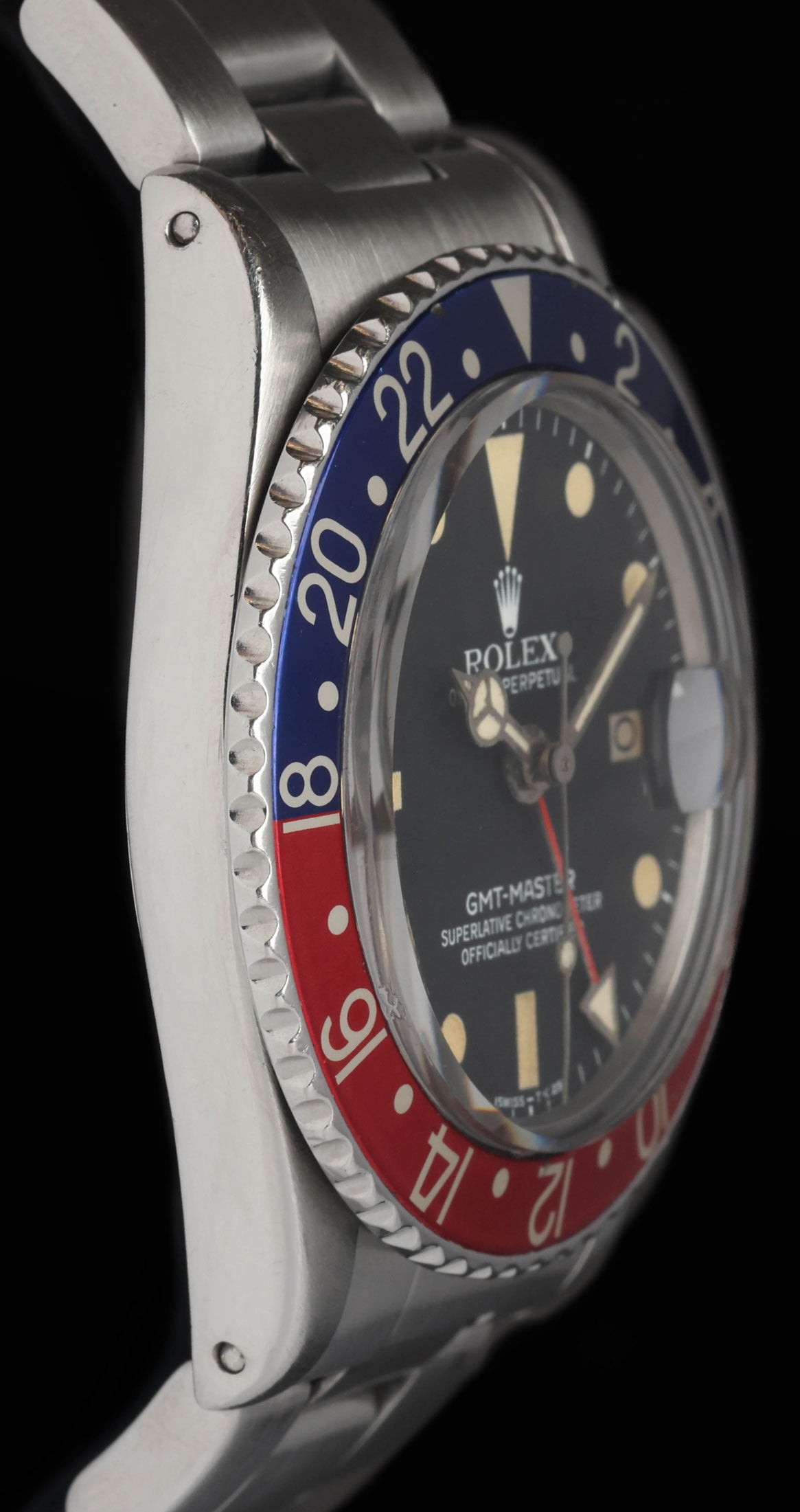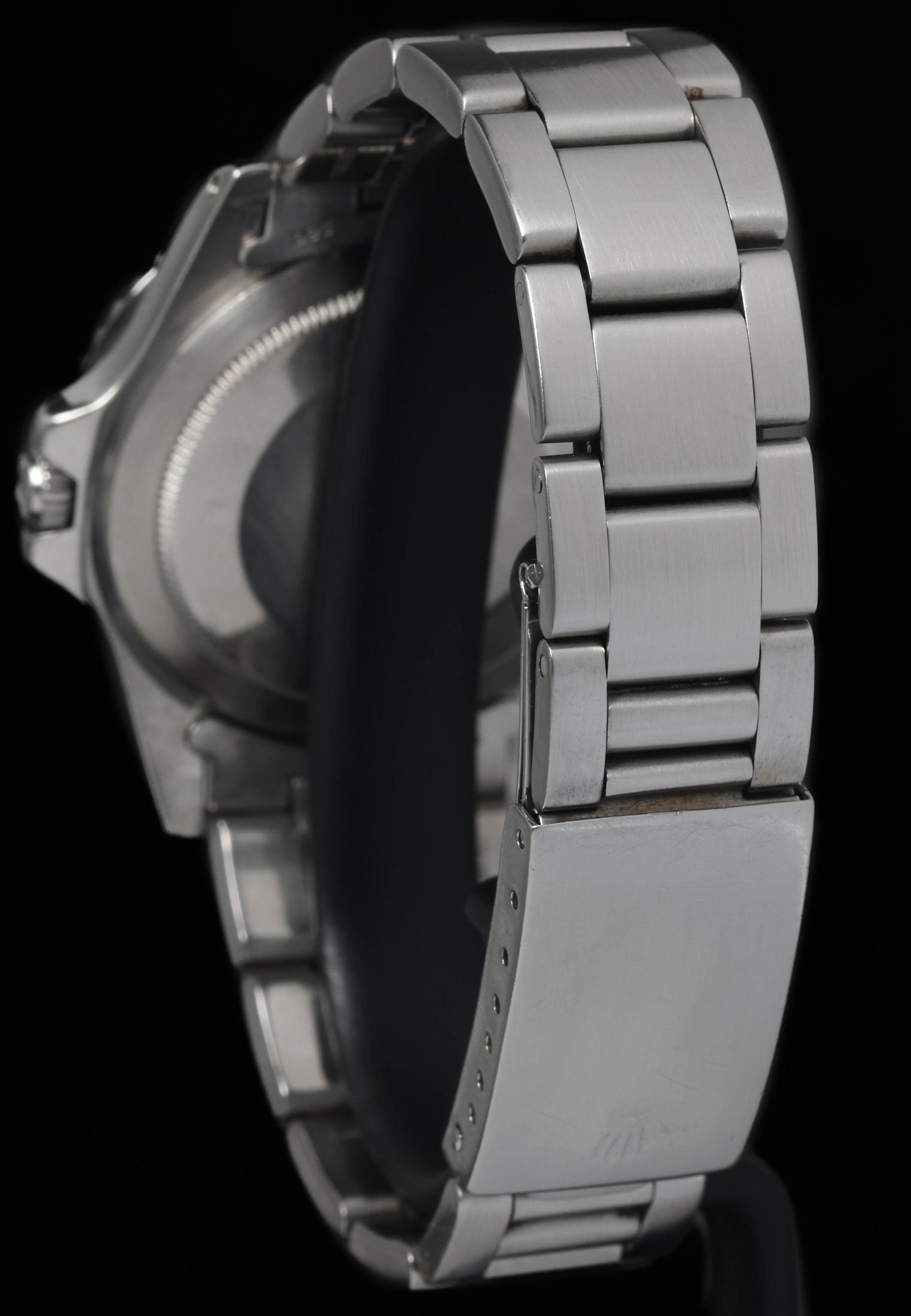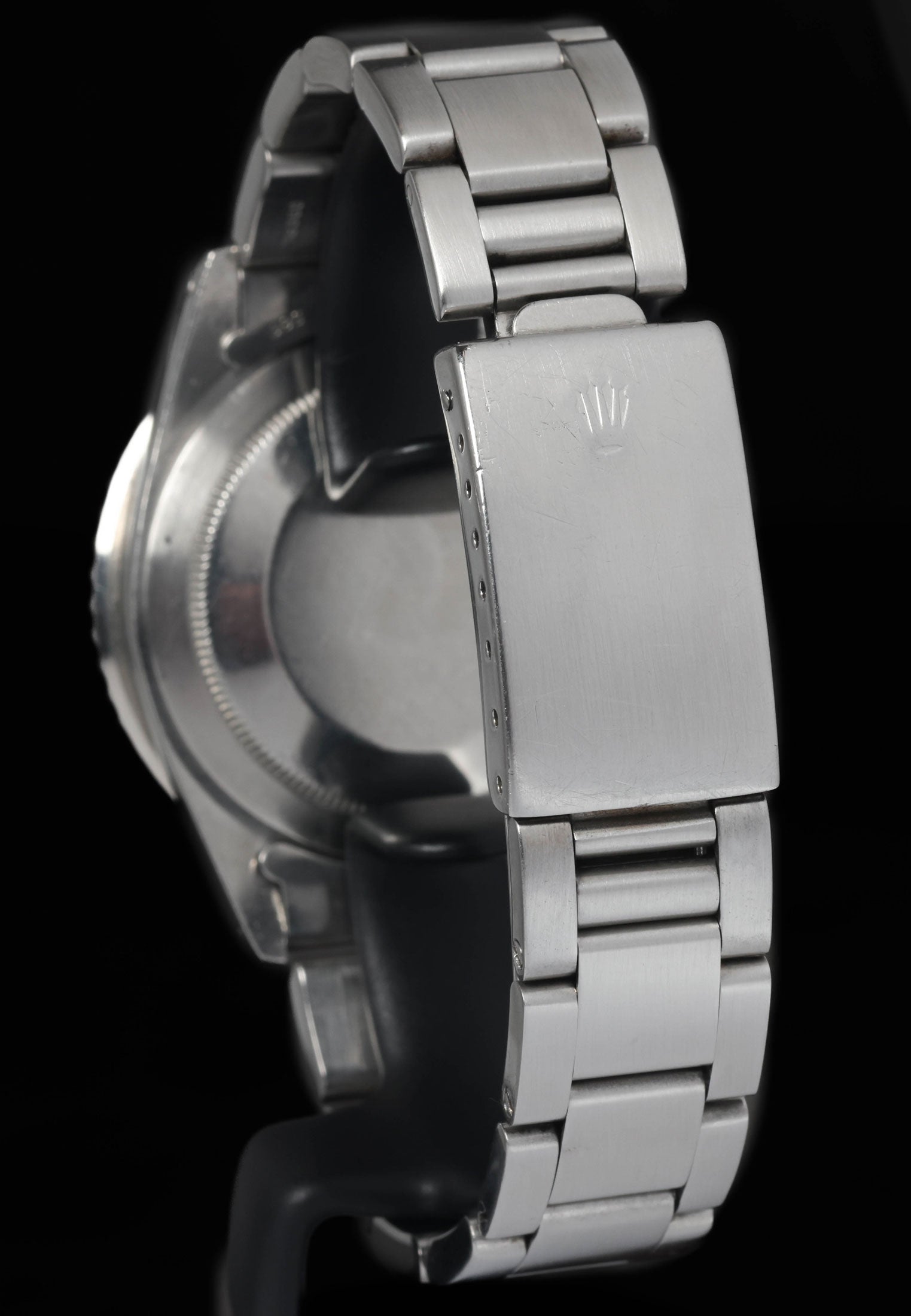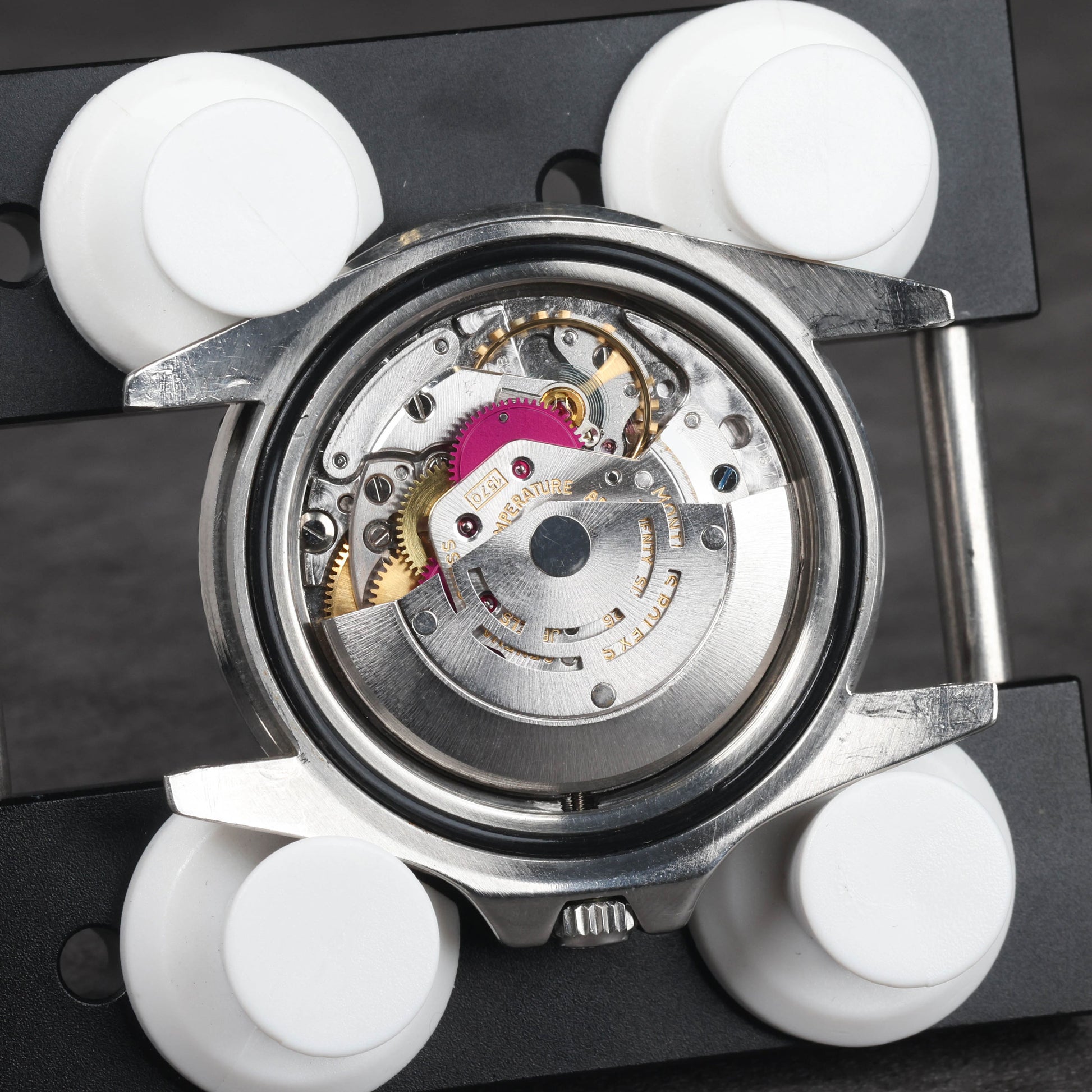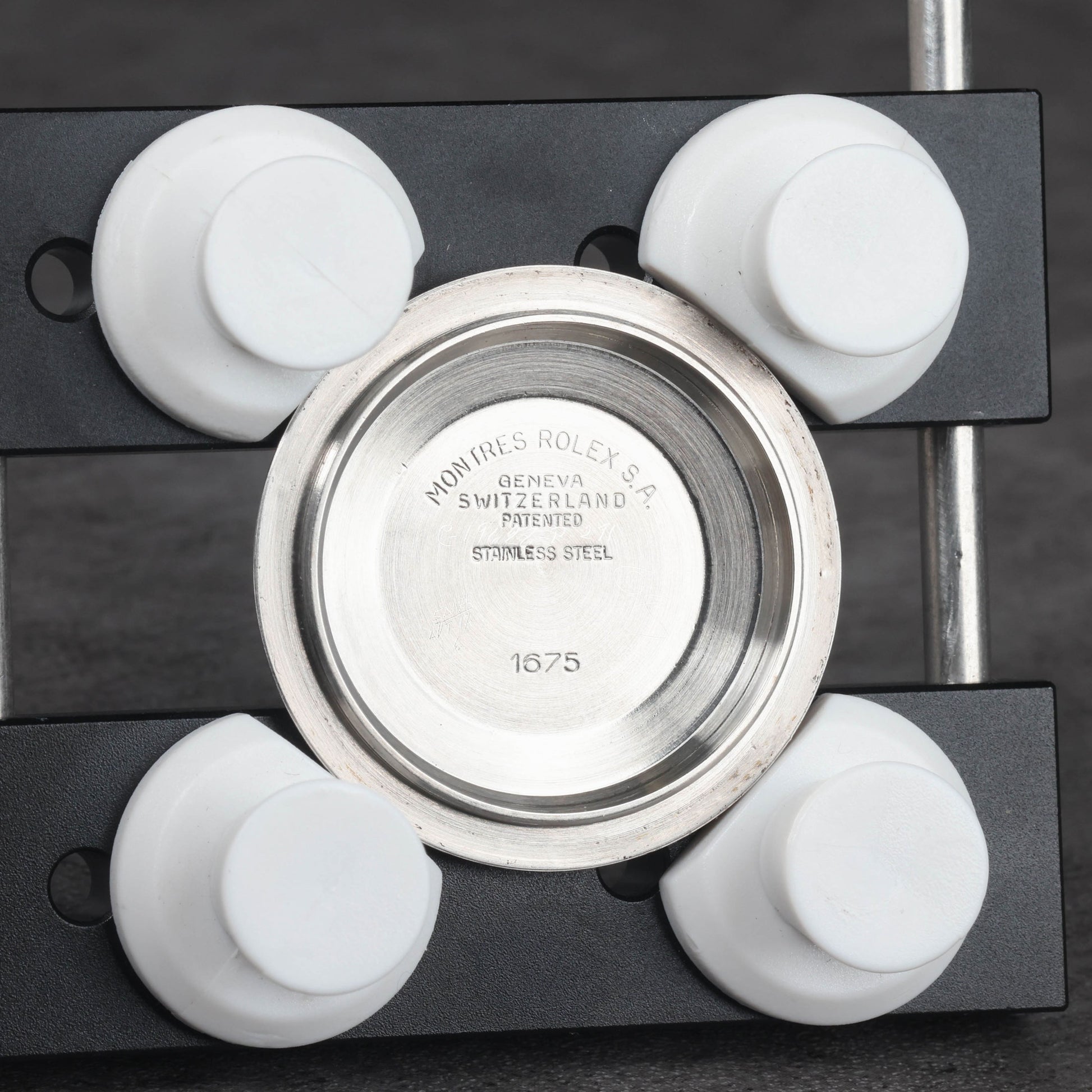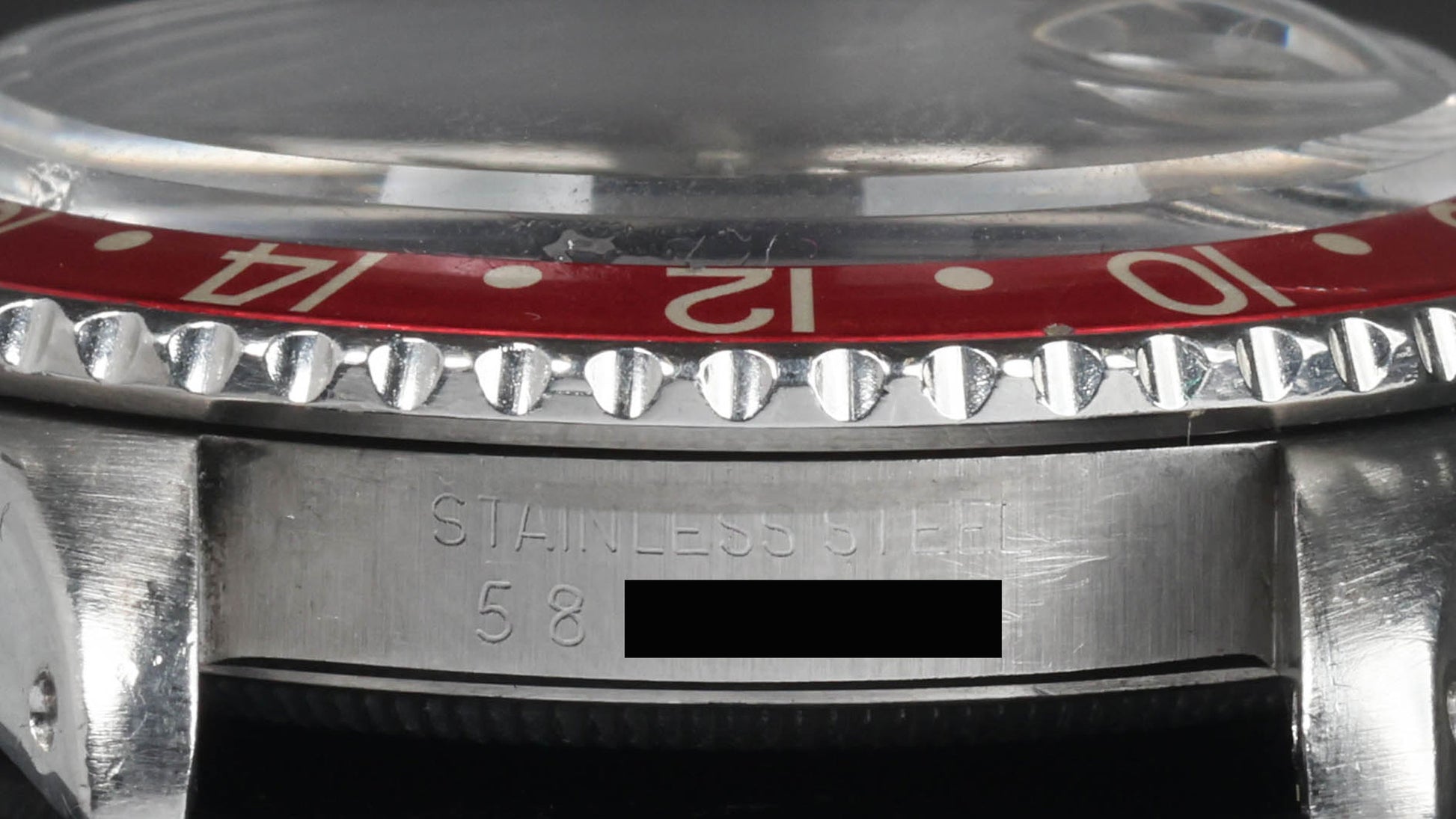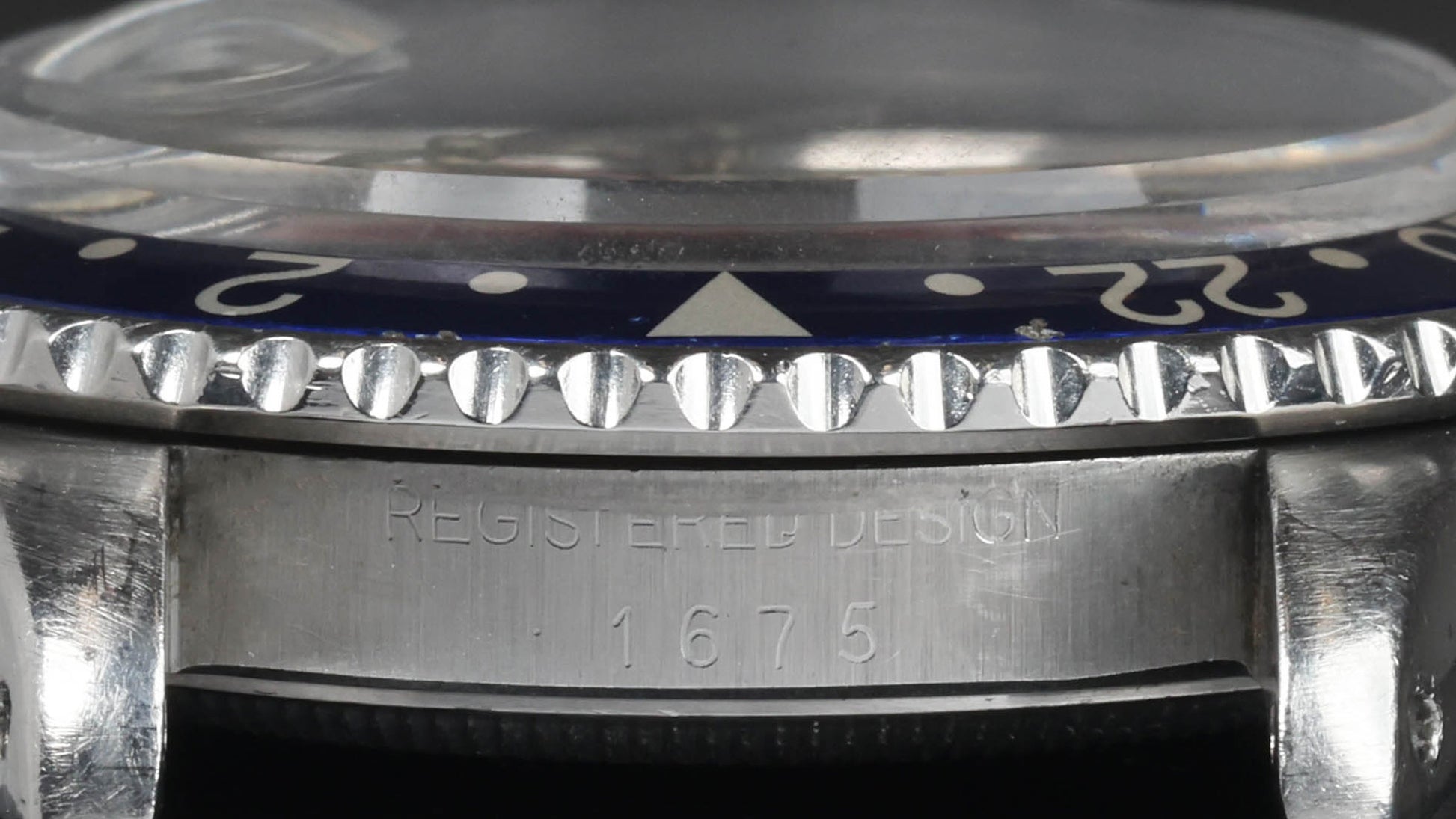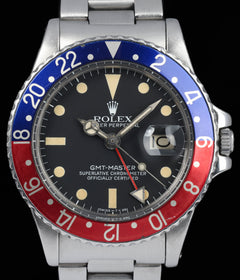Crown Vintage
Rolex GMT Master 1675 'Pepsi' 40mm 1979
Rolex GMT Master 1675 'Pepsi' 40mm 1979
Couldn't load pickup availability
Rolex GMT Master 1675 'Pepsi' 40mm 1979
The stainless steel Oyster case is in good vintage condition, with hairlines visible around the surfaces from regular wear. The case has been polished in the past, softening some of the original edges, though the overall proportions remain pleasing.
The matching Oyster bracelet is also in good vintage condition, showing visible stretch from age and use. The bracelet has been polished, consistent with the case, and remains secure on the wrist.
The matte dial is flawless, with crisp printing, strong colour, and luminous hour plots that remain clean and intact. The hands show light oxidation, adding vintage character while remaining structurally sound.
Overall, this example of the GMT-Master 1675 presents as a well-preserved watch with honest signs of age. A clean dial, original hands, and classic Pepsi bezel insert combine to make it an attractive representation of the reference
Share
Why we love this watch
Why we love this watch
Rolex GMT-Master 1675 “Pepsi”
Introduction
Introduced in 1959 and produced until 1980, it enjoyed one of the longest runs of any Rolex reference. Throughout its two decades of production, the 1675 evolved with subtle changes, but its overall design remained unmistakable: a stainless steel Oyster case, a red-and-blue “Pepsi” bezel insert, and a fourth 24-hour hand for dual-time tracking.
By the late 1970s, the 1675 had matured into its definitive form. It carried all the hallmarks of a professional tool watch, yet it had also become a style icon, seen on the wrists of pilots, travellers, and cultural figures. The Pepsi bezel, in particular, had become an emblem of global mobility, offering both colour and clarity of function.
The Origins of the GMT-Master
The story of the GMT-Master begins in the mid-1950s, when Pan American World Airways commissioned Rolex to create a watch for its long-haul pilots. With the rise of commercial jet travel, the ability to track multiple time zones became a necessity for airline crews navigating international routes.
Rolex responded with the GMT-Master 6542, launched in 1954. It featured a Bakelite bezel with a 24-hour scale, paired with a fourth hand rotating once every 24 hours. By rotating the bezel, the wearer could read both home and local time. While innovative, the fragile Bakelite bezel inserts were prone to cracking, and Rolex soon replaced them with aluminium.
The reference 1675 succeeded the 6542 in 1959, introducing crown guards and a larger case. With its durability, versatility, and distinctive looks, the 1675 quickly became a mainstay in Rolex’s professional line.
Case and Bezel
The 1675 was built around a 40mm stainless steel Oyster case, waterproof to 100 metres thanks to its screw-down crown and caseback. Early examples featured pointed crown guards, later replaced by more rounded guards for improved strength. The slim case profile, combined with long, elegant lugs, made it comfortable to wear while still providing robust durability.
The defining feature of the 1675 was its bidirectional aluminium bezel insert. The red and blue “Pepsi” insert divided the 24-hour scale into day and night segments, offering pilots quick reference across two time zones. The red represented daylight hours, while the blue marked night.
Over decades of use, the aluminium inserts often developed unique fading patterns. Reds softened into pale pinks or salmon tones, while blues shifted into lighter sky shades. Each bezel aged differently, giving every watch its own visual signature. These ghosted or faded Pepsi bezels are now one of the most admired aspects of vintage GMT-Masters.
The Dial and Hands
The 1675 underwent several dial evolutions over its lifespan. Early examples used gilt dials with glossy finishes and gold-coloured text. By the mid-1960s, Rolex had transitioned to matte dials with white printing, which continued through the 1970s.
The late 1970s dials were matte black with luminous tritium hour plots and white text. The luminous material often aged to warm shades of cream or yellow, adding vintage charm. Applied hour markers were framed in white gold, enhancing legibility and durability.
Hands followed the same evolution. The watch featured a Mercedes-style hour hand, sword-shaped minute hand, lollipop seconds hand, and a slender red 24-hour hand tipped with a luminous triangle. The 24-hour hand was not independently adjustable, meaning it rotated in sync with the main hour hand. To track a second time zone, the wearer rotated the bezel.
Movement: Calibre 1575
Inside the 1675 was the Rolex calibre 1575, part of the 1500 series of automatic movements introduced in the 1960s. It beat at 19,800 vibrations per hour, featured 26 jewels, and offered a 48-hour power reserve. Known for its reliability, the 1575 became the backbone of Rolex’s professional line.
By the 1970s, the calibre had been updated with a hacking seconds feature, allowing the seconds hand to be stopped when setting the time for greater precision. This was an important development, particularly for professionals who required accuracy across time zones.
The calibre 1575 was robust, simple to service, and highly dependable — qualities that contributed to the 1675’s reputation as both a tool watch and a travel companion.
Bracelet Options
The 1675 was offered on two primary bracelet types:
- Oyster bracelet: The three-link Oyster bracelet (reference 7836 or later 78360) gave the watch a sporty, professional look. Its solid construction and brushed finish emphasised durability.
- Jubilee bracelet: The five-link Jubilee (reference 6251H or 62510H) offered a more refined aesthetic, with polished centre links and a supple fit on the wrist.
Both bracelets used 20mm end links, and both were fitted with folding clasps. Some examples were also sold on leather straps, though metal bracelets remained the most popular.
The GMT-Master in Context
By the late 1970s, the GMT-Master had become far more than a pilot’s instrument. It was a cosmopolitan symbol, worn by professionals, celebrities, and world travellers. It had graced the wrists of astronauts, including NASA crews who used it alongside the Speedmaster, and it appeared in films and popular culture.
The Pepsi bezel, in particular, became iconic. Its bold colours set the GMT apart from other tool watches like the Submariner or Explorer. It was instantly recognisable, embodying both function and flair.
The 1675 also reflected Rolex’s philosophy of evolutionary refinement. While the watch had changed significantly since the 6542, it remained visually consistent, ensuring continuity and familiarity. This steady progression is one of the reasons Rolex designs have such enduring appeal.
Wearability and Presence
On the wrist, the 1675 offers timeless proportions. Its 40mm case size is versatile, neither too large nor too small, and its slim profile makes it comfortable for daily wear. The matte dial ensures excellent legibility, while the splash of red and blue on the bezel adds personality.
Unlike modern ceramic bezels, the aluminium insert develops character over time, creating individuality with each example. Combined with the warm patina of tritium lume, no two vintage GMT-Masters look exactly alike. This unique ageing process gives the 1675 a sense of authenticity and life that modern watches cannot replicate.
Historical Importance
The GMT-Master 1675 holds a central place in Rolex’s history. It was produced for over 20 years, longer than almost any other reference, and it established the design codes that continue in the GMT-Master II today. Its introduction of crown guards, use of the calibre 1575, and long association with international travel all contribute to its significance.
For Rolex, the 1675 marked the transition from the pioneering early years of the GMT-Master to the modern era of robust, reliable sports watches. It cemented the Pepsi bezel as a brand signature and ensured the GMT-Master’s place as one of the most important wristwatches of the 20th century.
Legacy of the Pepsi Bezel
The Pepsi bezel is one of Rolex’s greatest design achievements. Beyond its practicality, it provided a visual identity that set the GMT-Master apart. The red-and-blue insert has been revived in modern ceramic form on contemporary GMT-Master IIs, ensuring continuity across decades.
The Pepsi bezel’s enduring popularity underscores the brilliance of its original concept: intuitive, colourful, and instantly recognisable. It is not just functional but symbolic of an era when international travel was glamorous and aspirational.
Final Thoughts
The Rolex GMT-Master 1675 stands as the final iteration of a reference that defined the GMT-Master line for over two decades. Its role in aviation, its place in pop culture, and its unmistakable Pepsi bezel ensure its legacy. On the wrist, it offers vintage charm, everyday wearability, and an authenticity that comes only with time.
The GMT-Master 1675 remains an icon not because it has changed, but because it has endured. It is the archetype of the travel watch, a companion for pilots and adventurers alike, and one of the most beloved references in the Rolex catalogue.
Case & Bracelet
Case & Bracelet
- Case in good vintage condition, hairlines visible around case.
- Bracelet in good vintage condition, stretch visible.
- Case & bracelet polished.
Dial & Hands
Dial & Hands
- Dial Flawless
- Hands lightly oxidised.
Warranty & Condition
Warranty & Condition
Crown Vintage Watches provides a minimum 3-month mechanical warranty on pre-owned watches, from the date of purchase.
The warranty covers mechanical defects only.
The warranty does not cover damages such as scratches, finish, crystals, glass, straps (leather, fabric or rubber damage due to wear and tear), damage resulting from wear under conditions exceeding the watch manufacturer’s water resistance limitations, and damage due to physical and or accidental abuse.
Please note, water resistance is neither tested nor guaranteed.
Shipping and insurance costs for warranty returns to us must be covered by the customer. Returns must be shipped via traceable courier. Return shipment must be pre-paid and fully insured. Collect shipping will be refused. In case of loss or damages, the customer is liable.
Our Pledge
At Crown Vintage Watches, we stand by the authenticity of every product we sell. For added peace of mind, customers are welcome to have items independently authenticated at their own expense.
Condition
Due to the nature of vintage timepieces, all watches are sold as is. We will accurately describe the current condition and working order of all watches we sell to the best of our ability.
Shipping & Refund
Shipping & Refund
